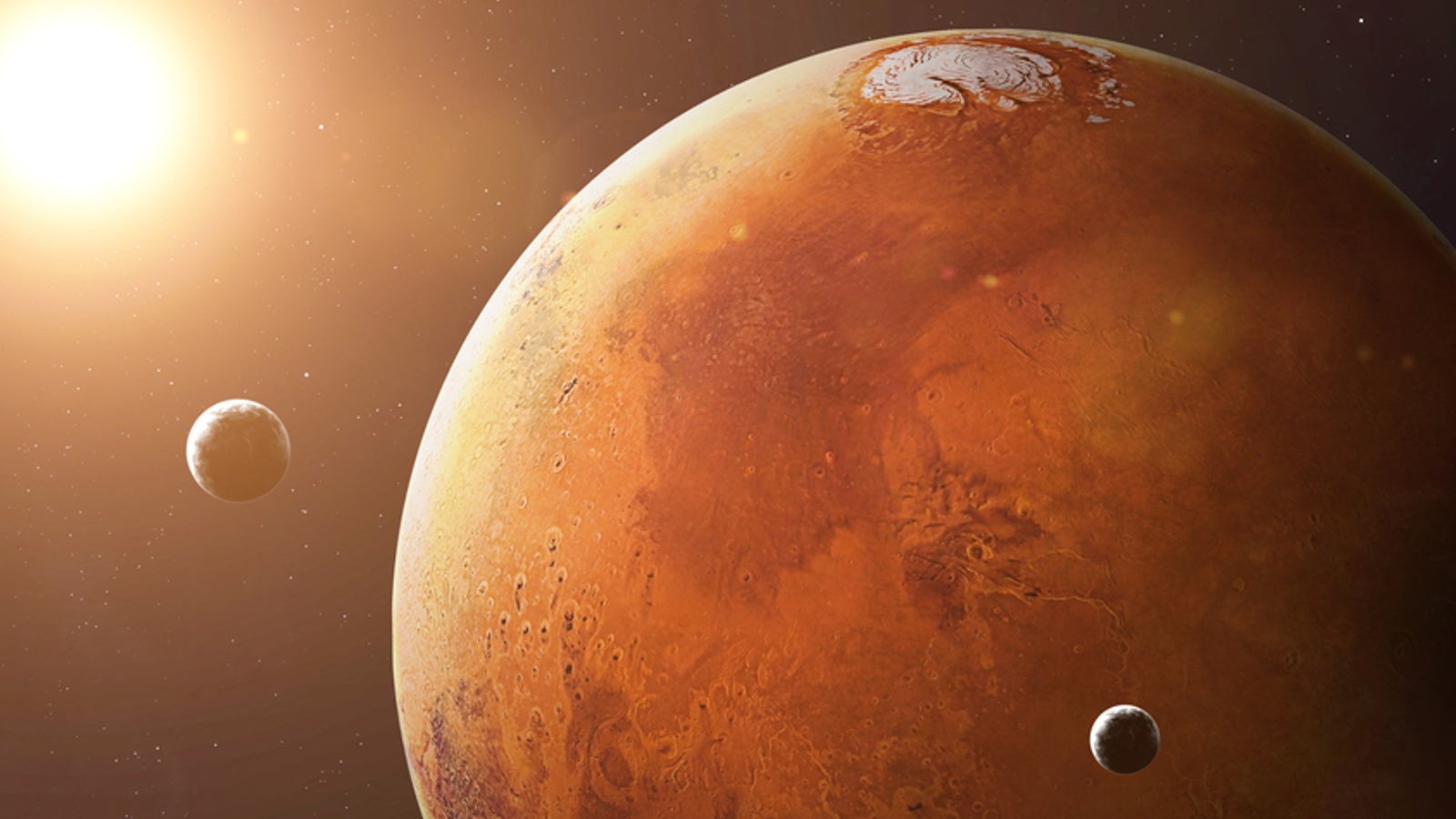Recordings of Martian earthquakes, or “marsquakes,” collected by a robot on the Red Planet may have finally solved a 50-year-old mystery: why one half of Mars is so drastically different from the other.
Since the 1970s, researchers have known that Mars is split into two main areas. The northern lowlands cover around two-thirds of the planet’s northern hemisphere, while the southern highlands cover the rest of the planet and have an average elevation roughly 3 miles (5 kilometers) higher than that of the northern lowlands. Mars’ crust, which sits on top of a mantle of molten rock similar to the one inside Earth, is also thicker in the southern highlands. This planetary imbalance is known as the “Martian dichotomy.”
There are two main theories for the origin of the Martian dichotomy. One is that the divide was caused by some unknown process within the planet’s interior. The other is that a massive collision with a moon-size object or multiple smaller space rocks reshaped the planet’s surface. However, the ages of the rocks on the Martian surface hint that whatever caused the imbalance happened in the very early days of the solar system, which makes it hard to determine the exact cause.
But in a new study published Dec. 27, 2024, in the journal Geophysical Research Letters, researchers analyzed data from NASA’s InSight lander, which records how seismic waves from marsquakes reverberate within the planet, to see if they could detect any evidence of an internal origin for the Martian dichotomy.
InSight is located near the border between the northern lowlands and the southern highlands, which allowed the team to compare how seismic waves moved through the mantle below two sites: one on each side of the divide.
Related: 10 amazing things we found on Mars in 2024

“Comparing these two [sites] showed that the waves lost energy more quickly in the southern highlands,” the study authors wrote in The Conversation. “The most likely explanation is that the [molten] rock beneath the southern highlands is hotter than in the north.”
“This temperature difference between the two halves of the dichotomy supports the idea that the split was caused by internal forces on Mars, not some external impact,” they added.
Internal origin vs. external impact
The study team thinks this temperature difference can be explained by ancient tectonic activity that has since disappeared from Mars.
“At one point, Mars had moving tectonic plates like Earth does,” the researchers wrote. “The movement of these plates and the molten rock beneath them could have created something like the dichotomy, which was then frozen in place when the tectonic plates stopped moving to form what scientists call a “stagnant lid” on the planet’s molten interior.”
In this scenario, the magma beneath the South is constantly being pushed up against the crust, while the magma below the North is sinking toward the planet’s core. This would also explain why the planet’s crust is thicker in the South, the researchers added.
However, it may be too early to rule out the external impact scenario, which some recent studies have shown to be potentially viable.
“To conclusively answer the question of what caused the Martian dichotomy, we will need more marsquake data, as well as detailed models of how Mars formed,” the researchers wrote. “However, our study reveals an important new piece of the puzzle.”
